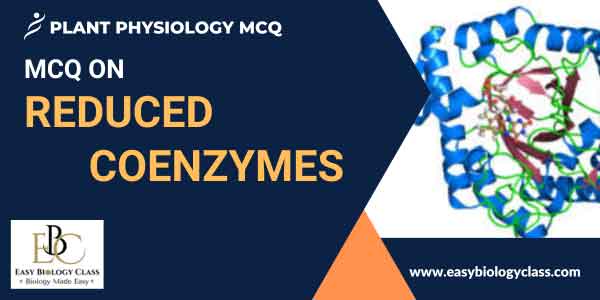Reduced coenzymes, such as NADH and FADH2, are molecules that carry electrons and hydrogen ions during cellular respiration. They are formed when NAD+ and FAD gain electrons (are reduced) during metabolic reactions like glycolysis and the Krebs cycle, facilitating ATP production in the electron transport chain. This is an MCQ on Reduced Coenzymes and its significance in photosynthesis and respiration.
<<< Back to Plant Physiology MCQ Page
You may also like... NOTES QUESTION BANK COMPETITIVE EXAMS. PPTs UNIVERSITY EXAMS DIFFERENCE BETWEEN.. MCQs PLUS ONE BIOLOGY NEWS & JOBS MOCK TESTS PLUS TWO BIOLOGY PRACTICAL


